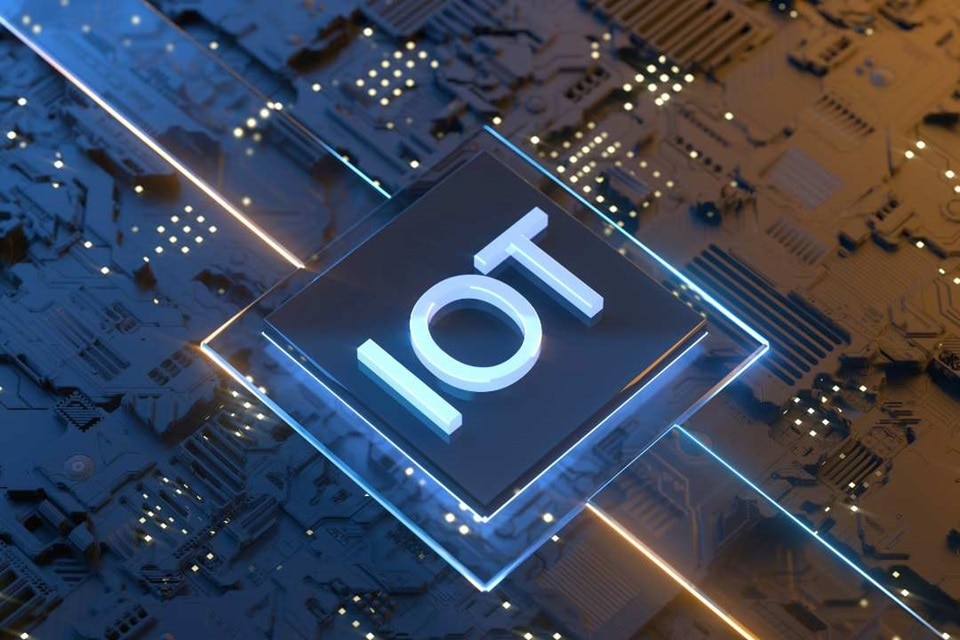Exploring IoT technologies and their role in improving energy management
IoT sensors are revolutionising smart buildings by enabling automated, efficient and sustainable management. Thanks to these devices, it is possible to optimise energy consumption, improve occupant comfort and enhance security, making every building a smarter and more adapted environment.

IoT sensors to optimise smart buildings and improve energy efficiency
IoT sensors: Revolutionising smart buildings
Imagine a building that can adapt in real time to the needs of its occupants, optimise its energy consumption and ensure optimal comfort without human intervention. This is not science fiction, but reality made possible by IoT sensors. These connected devices, true digital sentinels, continuously collect and transmit data via the Internet to enable intelligent infrastructure management. Their role? To monitor, analyse and automate equipment such as heating, ventilation and lighting in what is now known as a smart building.
These sensors do more than just measure isolated parameters. They are at the heart of an ecosystem where every piece of information transmitted contributes to better decision-making to optimise building performance. Thanks to automation, they reduce manual intervention while increasing energy efficiency, a priority in a world seeking sustainability.
Types of IoT sensors and their specific functions
IoT sensors come in a wide variety of categories, each playing a key role in transforming traditional buildings into true smart buildings. Take temperature and humidity sensors, for example, which automatically adjust the indoor temperature or detect abnormal variations that may indicate a technical problem. Motion sensors activate or deactivate lighting or heating in unoccupied areas, offering significant savings.
Other devices such as air quality sensors monitor fine particle concentrations or CO2 levels to ensure a healthy environment. In addition, presence detectors play a crucial role in security and space management by facilitating dynamic room booking, for example. Each sensor is an essential building block in the overall smart building system, contributing to optimised and sustainable management.
Optimised resource management
Reduced energy consumption thanks to IoT sensors
Did you know that a traditional building can waste up to 30% of its energy due to inefficient management? IoT sensors are radically changing this dynamic by enabling precise and continuous optimisation of energy consumption. These devices monitor heating, ventilation and lighting requirements in real time and automatically adjust equipment to avoid waste. For example, a connected thermostat linked to temperature sensors can regulate heating based on room occupancy, reducing unnecessary expenses.
The data collected by these sensors also helps identify anomalies or malfunctions in the systems, preventing prolonged overconsumption. The results are impressive: according to some studies, integrating IoT sensors can reduce a building's energy bill by up to 25%. This approach is not only about saving money, but also makes a direct contribution to reducing carbon footprints, a major challenge in the current context of ecological transition.
Data centralisation for smart, automated management
One of the major advantages of smart buildings is their ability to centralise and analyse data from various IoT sensors. Imagine a single dashboard where all information about temperature, humidity, light levels and occupancy is accessible in real time. This centralisation enables facility managers and technical staff to make quick, informed decisions.
Thanks to this in-depth analysis, it becomes possible to automate certain processes to further improve the building's efficiency. For example, an intelligent system can anticipate energy consumption peaks and adjust equipment accordingly to avoid overloads. In addition, this approach facilitates the implementation of predictive maintenance, detecting early warning signs of a problem before it occurs. The result? A significant reduction in costs associated with unexpected repairs and improved equipment durability.
Improved occupant comfort
Optimised well-being thanks to IoT sensors
Who hasn't dreamed of a work or living environment that is perfectly tailored to their needs? IoT sensors are the invisible allies that make this possible in a smart building. By automatically adjusting parameters such as temperature, humidity and light levels, these devices create spaces where occupant well-being is maximised. For example, a temperature sensor can work with a connected thermostat to ensure the ideal temperature, even during sudden climate changes.
Light sensors regulate lighting based on the amount of natural light available, reducing not only energy consumption but also visual fatigue for users. This fine-tuned, automated management directly improves everyday quality of life while increasing productivity in professional spaces. In short, IoT sensors do more than just monitor: they transform buildings into truly responsive environments tailored to human needs.
Enhanced security and surveillance
In a smart building, security is never left to chance thanks to the intelligent integration of IoT sensors. Presence detectors, for example, play a key role in protecting occupants and infrastructure. They can automatically trigger alarm systems or activate surveillance cameras in the event of a suspicious intrusion. This level of responsiveness is essential to ensuring a secure environment.
Beyond physical security, these sensors also help monitor environmental conditions to prevent potential hazards. An air quality sensor can alert you to abnormal CO2 concentrations or detect harmful substances, enabling rapid response. This unique combination of control and automation ensures not only safety but also peace of mind for all building users.
Prospects for development and challenges ahead
Promising innovations in IoT sensors
The world of IoT sensors is evolving at breakneck speed, paving the way for innovations that are transforming smart buildings into veritable powerhouses of technology. Among the most notable advances are self-powered sensors, which can operate without an external power source thanks to technologies such as photovoltaics and kinetic energy recovery. These devices eliminate battery constraints, reducing maintenance costs while increasing durability.
The integration of artificial intelligence into IoT systems is another major trend. Thanks to machine learning algorithms, these sensors are able to predict energy needs or identify anomalies before they even occur. This proactive intelligence is transforming energy management and further optimising the performance of smart buildings. These innovations are not just improving efficiency: they are redefining what is possible in facility management.
Cybersecurity and maintenance challenges
However, this technological revolution is not without significant challenges, particularly in terms of cybersecurity. The data collected by IoT sensors is often sensitive, ranging from occupant habits to information about the security of the building itself. Inadequate protection of this data can lead to vulnerabilities that can be exploited by cyberattacks, jeopardising not only the integrity of the system but also the safety of users.
Another major challenge lies in predictive maintenance and the seamless integration of these sensors into existing infrastructures. Although these devices are designed to last, their interconnection with other systems can sometimes lead to complex problems requiring advanced technical expertise. In addition, ensuring compatibility between different manufacturers or standards remains a headache for many managers. These obstacles highlight the importance of a thoughtful and strategic approach when adopting IoT technologies in buildings.
